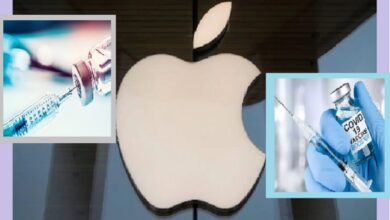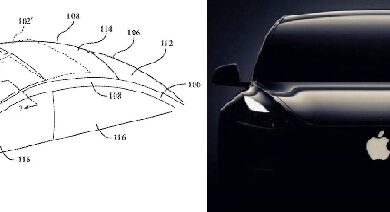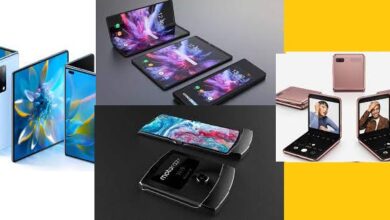LiFi- Light Fidelity Technology
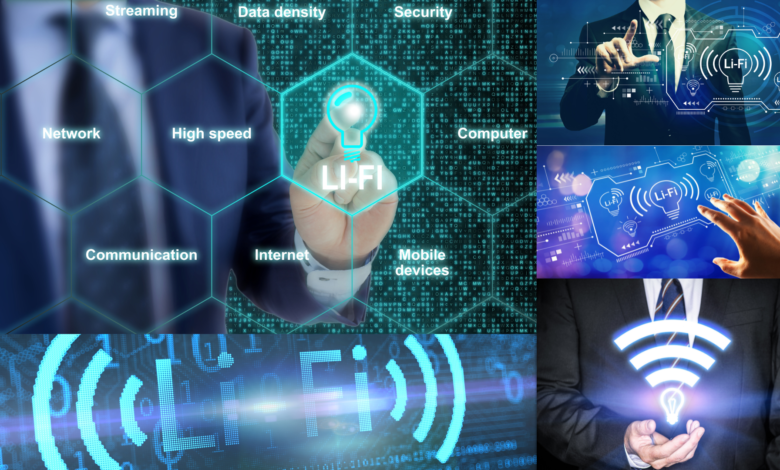
- What Is Light Fidelity Technology
- Cost Of Light Fidelity
- Advantages And Disadvantages of Light Fidelity Technology
- Applications of Light Fidelity
We will be able to connect to the internet using light from lamps, streetlights, or LED televisions thanks to LiFi Light Fidelity technology. It is not only cheaper, safer, and faster than wifi, but it also does not require a router. To access the internet, simply point your phone or tablet towards a light bulb.
What Is Light Fidelity Technology?
LiFi (light fidelity) is a bidirectional wireless system that uses LED or infrared light to transport data. Unlike wifi, which uses radio frequency to deliver an internet signal, LiFi technology simply requires a light source with a chip to transmit an internet signal by light waves.
This is a huge step forward from today’s wireless networks. Light Fidelity boosts the speed and bandwidth of wifi, 3G, and 4G connections.
The latter have a limited capacity and become saturated as the number of users browsing increases, leading them to crash, slow down, or even disconnect.
However, LiFi’s band frequency of 200,000 GHz, compared to wifi’s limit of 5 GHz, is 100 times quicker and can carry far more data per second.
When the best wifi would barely achieve 300 Mbit/s, a 2017 study by the University of Eindhoven obtained a download rate of 42.8 Gbit/s using infrared light with a radius of 2.5 meters.
How does Light Fidelity work?
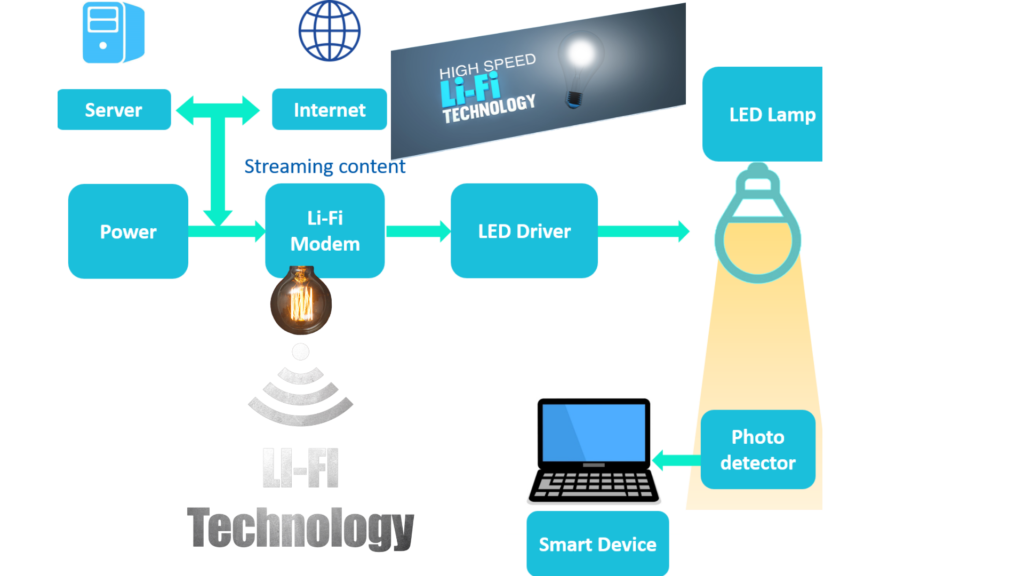
LiFi stands for light-based data communication that is high-speed, bidirectional, and fully networked. LiFi is a wireless network made up of many lightbulbs.
When an electrical current is delivered to an LED light bulb, it emits a stream of light (photons). Because LED bulbs are semiconductor devices, the brightness of the light they emit may be altered at incredibly rapid speeds.
Read Also: WiFi – Wireless Fidelity Meaning
This indicates that the signal can be delivered by changing the rate of light modulation. A detector can then receive the signal and interpret the changes in light intensity (the signal) as data.
You also transmit a digital 1 when the LED is on and a 0 when the LED is off.
Because the intensity modulation is invisible to the naked eye, communication is as smooth as with other radio systems, allowing users to connect wherever there is LiFi enabled light. Data can be sent at rapid speeds from an LED light bulb to a computer using this technology.
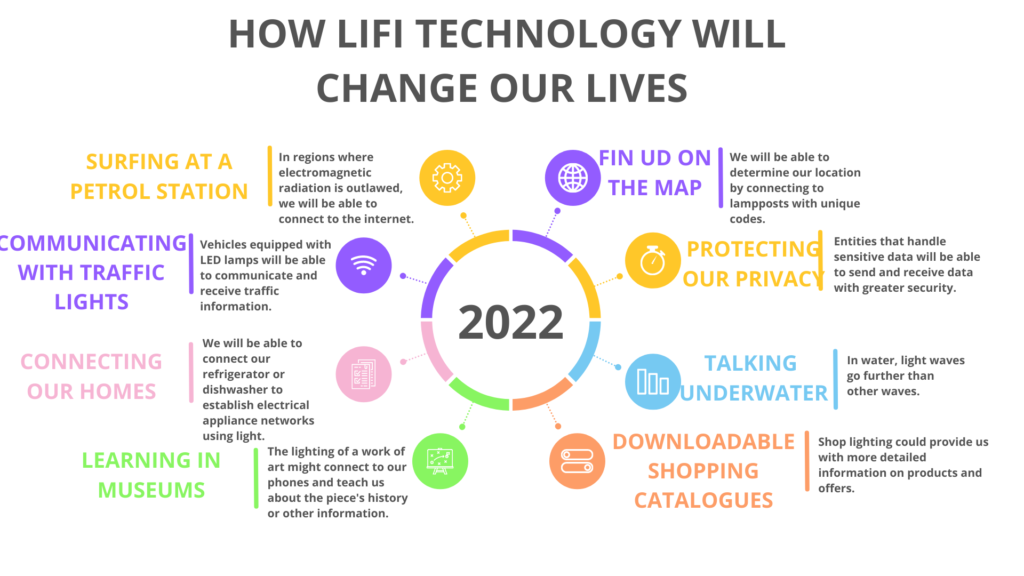
Cost Of Light Fidelity
Purchasing LiFi items from several LiFi providers might be somewhat costly for consumers. PureLiFi claims that they are currently working on miniaturizing LiFi technology and making it more inexpensive for consumers in the long run.
The ultimate goal is for LiFi to be available on every mobile device. This means that the technology will be affordable for handsets, tablets, and laptops to incorporate.
The goal is to have LiFi built in every wireless mobile device, so the end user will notice little or no expense associated with it.
Companies can now contact pureLiFi to discuss collaborating on proof-of-concept projects and other types of deployments. Individual requirements determine the cost of these installations.
Applications of Light Fidelity
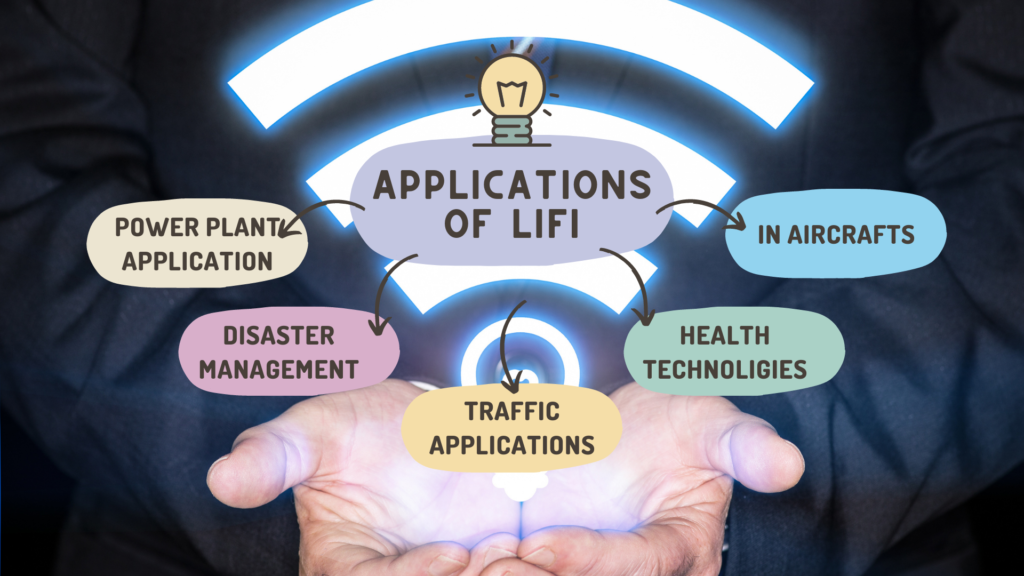
In Aircrafts
Passengers aboard airplanes pay exorbitant costs for low-speed internet, yet Li-Fi offers low-cost high-speed internet.
Health technologies
In many hospitals, Wi-Fi has been replaced by Li-Fi because Wi-Fi interacts with mobile devices and computers, blocking monitoring equipment signals.
Traffic Application
Li-Fi can be utilized in traffic control by interacting with the LED lights on vehicles such as buses, which can assist in effectively managing traffic and preventing accidents by alerting other drivers when cars are approaching too closely.
Disaster management
Li-Fi can be used as groundbreaking methods of correspondence in the midst of disaster, e.g. seismic tremor or, on other hand, hurricanes as subway stations and passages; common dead zones do not impede Li-Fi.
Power Plant application
As the use of Wi-Fi and other radiation sources becomes unacceptably dangerous, Li-Fi is becoming increasingly safe and available in all areas of the power plant.
Advantages And Disadvantages of Light Fidelity Technology
| Advantage of LiFi | Disadvantage of LiFi |
| As a result, the transmission of information requires very little additional power, making it cost and energy efficient. | The presence of a light source is required for internet access. This may limit the places and situations where Li-Fi can be used. |
| Not only does Li-Fi require fewer components, but it also only requires a tiny increase in data transmission capability. | Close or perfect line of sight is required to trade data. |
| Light sources are everywhere, thus accessibility is not an issue. Lights can be used as a model for information transfer in this regard. | Because light waves cannot pass through walls, Li-Fi has a far narrower range than Wi-Fi. |
| Security is one of Li-main Fi’s advantages. Because light cannot pass through opaque structures, Li-Fi web is only accessible to clients within a specific zone and cannot be intercepted or misused beyond the operational region. | Data transmission on paths is hampered by opaque obstructions. |
| Because of the combination of low interference, high bandwidths, and high-intensity output, Li-Fi can deliver high data rates of up to 1 Gbps. | Normal light, sunlight, and ordinary electric light can influence information transmission speed. |
| —————————————————————- | Installation of VLC systems is expensive. |
Conclusion
Electronic devices using photo-diodes can gather information in the presence of visible light. This means that LED light bulbs may provide both light and wireless connectivity anywhere LEDs are utilized. Wi-Fi, in general, is effective at providing wireless data coverage within buildings, however Li-Fi will provide excellent density data coverage in a specific location without causing radio interference.

Q- Is LiFi superior to Wi-Fi?
A- Another significant benefit of LiFi is that, because light travels at such high rates, it allows LiFi connections to occur nearly instantly. This leads in speedier data transmission and internet connectivity – approximately 100 times faster than WiFi speeds.
Q- Is Light Fidelity technology a possibility?
A- LiFi is expected to be made available to the general public in early 2022.
Q- What countries have LiFi?
A- Indonesia is one of the first countries to test LiFi in a school. Signify (Euronext: LIGHT), the world leader in lighting, stated that it is piloting its commercial LiFi system with more than 30 customers in Europe, North America, and Asia.
Q- What is the LiFi range?
A- ten m
Q- Who is the inventor of LiFi?
A- Haas, Professor

